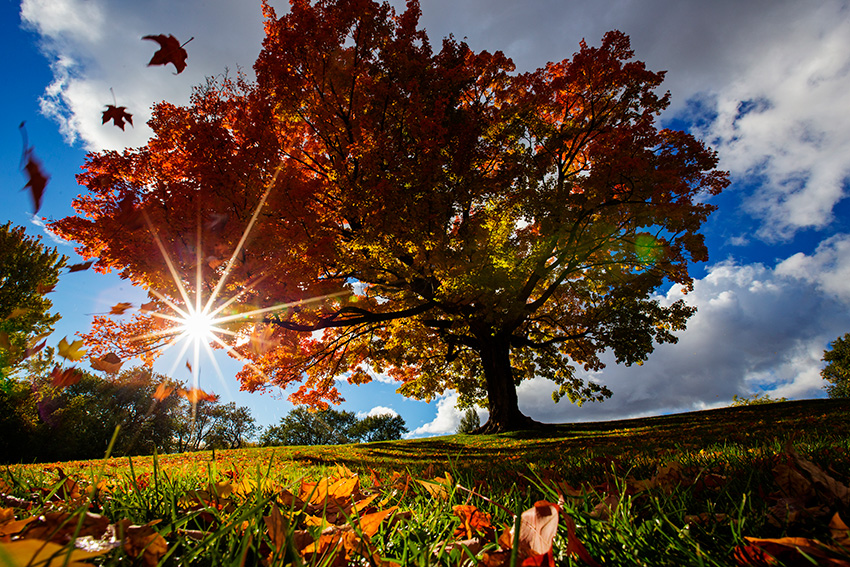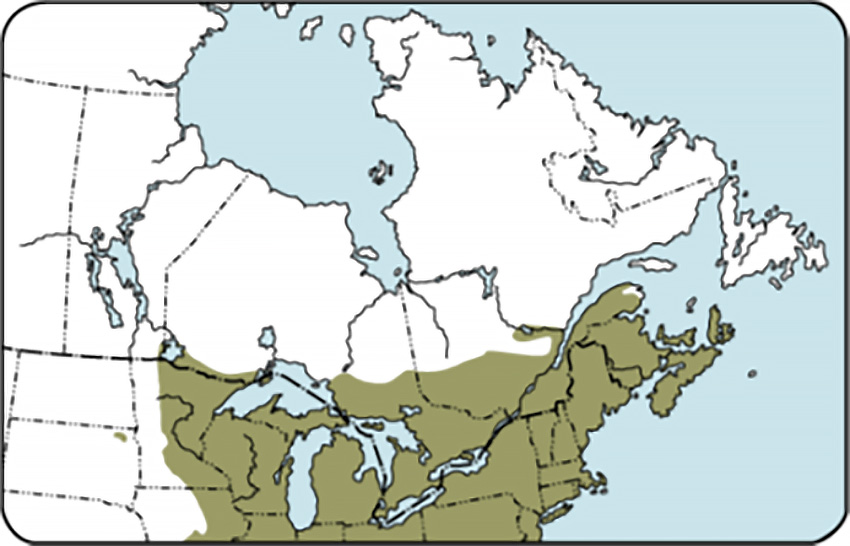Sugar Maple (Acer saccharum)

Country: Canada
Common name: Sugar maple
Scientific name: Acer saccharum Marsh
Family: Sapindaceae
Synonymy: Rock maple, hard maple, Érable à sucre (French)
Cultural, Social and Spiritual Value
Maple trees are important to Canada in two main ways. First, the maple leaf is the national symbol of Canada and an important part of Canada‘s national identity. Sugar maples were important to Indigenous Peoples prior to colonization, as they tapped and boiled down the sap to make maple syrup. Canada‘s Indigenous Peoples taught early settlers how to do this. As a formal symbol, maple leaves are present on the coats of arms of the provinces of Ontario and Québec, which were created in 1868. During World War I and World War II, the maple leaf was used on regimental badges of Canadian soldiers, and in 1921, it was included on the Canadian national coat of arms. Finally, a single, red maple leaf was chosen to grace Canada‘s new national flag in 1965. Maple trees were officially recognized as the arboreal emblem of Canada in 1996. Canadians travelling abroad proudly sew maple leaves to their backpacks, jackets and caps as a way of displaying their national identity.
Second, sugar maples in particular have a social significance to Canadians. Every spring, when the snow begins to melt and temperatures hover around the freezing mark with cold nights and warm days, rural landowners in Central and Eastern Canada begin to “tap” their sugar maples. The tree‘s sap is collected in buckets, or more commonly, in tube systems, from individual trees, and then moved into large vats. The sap is then boiled down in a large evaporator to create maple syrup. It takes approximately 40 litres of sap to make 1 litre of maple syrup. As part of this tradition, many urban Canadians make a trip to the countryside and visit the “sugar bush” where this process takes place. Many small towns have festivals and celebrations that mark the end of Canada‘s winter and make syrup production a community celebration.
Maple syrup itself is a cultural symbol. Canada is the world‘s largest producer of maple syrup; in 2015, Canada accounted for over 80% of total global maple syrup and sugar production, which was worth approximately $360 million. The majority (over 90%) of Canada‘s maple syrup is produced in the province of Quebec.
General Background
The sugar maple is a broadleaf species which is found in mixed forests with other broadleaf species, eastern white pine and eastern hemlock. It can reach heights of 35 m, with trunk diameters of 90 cm. It has a straight trunk, a narrow round-topped crown and a deep, wide-spreading root system. The tree is economically valued as a hardwood species and as the source of Canada‘s maple sugar industry. Aesthetically, the tree gives eastern Canada its distinctive fall colours; sugar maple leaves turn a brilliant shade of red in autumn.
There are ten native species of maple in Canada: sugar, black, silver, bigleaf, red, mountain, striped, Douglas, vine and Manitoba. All native species of maple are considered an official symbol of Canada, including the sugar maple.
Geographical Distribution
The sugar maple is found in Canada in the Maritime provinces, southern Ontario and southern Quebec.
 (Image from Natural Resources Canada. 2015. Trees, Insects and Diseases of Canada’s Forests Database. Database entry. “Sugar Maple”.)
(Image from Natural Resources Canada. 2015. Trees, Insects and Diseases of Canada’s Forests Database. Database entry. “Sugar Maple”.)
There are ten species of maple trees native to Canada. Combined, it is estimated that maples occupy about 8,681,000 hectares of land in Canada and have a total tree volume of 1,403 million m3. By volume, they make up approximately 3% of Canada‘s forests and by area about 2.5%. Approximately 13% of maple stands, by area, are less than 40 years old, 35% are between 41 and 60 years old, 42% are 61-100 years old, and about 10% are more than 100 years old. Very few maple trees are over 200 years old.
Current Population Trends
Sugar maple populations appear to be stable, healthy and expanding in some areas, however a combination of biotic and abiotic conditions can periodically impact populations that are predisposed to stress. This periodic impact is called “maple dieback”.
Habitat
Sugar maples prefer deep, fertile, moist, well-drained soils with some lime content. On the Canadian Shield, they prefer deep soils low in lime. Sugar maples tolerate heavy shade for many years, but grow normally when released by an opening in the canopy.
Major Current and Potential Threats
The Asian Longhorned beetle (Anoplophora glabripennis), an exotic, invasive insect native to China and the Korean Peninsula was discovered in Toronto, Ontario in 2003. During its lifecycle, the larvae of this species feeds on the inner bark and heartwood of trees for several weeks or months, reducing nutrient transport within the tree and ultimately killing it. The insect has no natural enemies in North America, and there are no approved chemical treatments to control it in Canada.
The beetle has the potential to lead to widespread tree losses in the urban landscape, impacts on the tourism and recreation industries, losses in the hardwood forest industry worth billions of dollars in wood products, losses in the multi-million-dollar maple syrup industry, significant damage to ecosystems, and the imposition of trade embargoes on Canadian forest products. An eradication program was put in place for this insect in 2004 after it was discovered in Toronto, and no infested trees have been found since 2007. Surveys are conducted annually to continue to monitor for the reappearance of this insect
Conservation and Protection Status
Sugar maple is not a species at risk.
Bibliographic References and Web Sites
- Agriculture and Agri-Food Canada. 2016. Webpage. Statistical Overview of the Canadian Maple Industry.
- Agriculture and Agri-Food Canada. 2011. PDF. “Canadian Maple Syrup”.
- Bowers and Hopkin. 1995. ARNEWS and North American Maple Project (NAMP), Canadian Forest Service Information Report ST-X-14.
- Canadian Department of Heritage. 2016. Webpage. “Official Symbols of Canada”.
- Canada‘s National Forest Inventory. Website. Standard Reports, Statistical Summaries for Canada.
- Horsley, S.B, Long, R., and S.W. Baily. 2002. Health of Eastern North American Sugar Maple Forests and Factors Affecting Decline. Northern Journal of Applied Forestry 19(1):34-44.
- Hart, J.L., Oswalt, C.M. and Turberville, C.M. 2014. Population dynamics of sugar maple through the southern portion of its range: implications for range migration. Botany 92: 563-569.
- Natural Resources Canada. 2015. Trees, Insects and Diseases of Canada’s Forests Database. Database entry. “Sugar Maple”.
- Natural Resources Canada. 2016. Webpage. “Asian longhorned beetle”.
- The Canadian Encyclopedia. 2015. Webpage. “Maple”.
